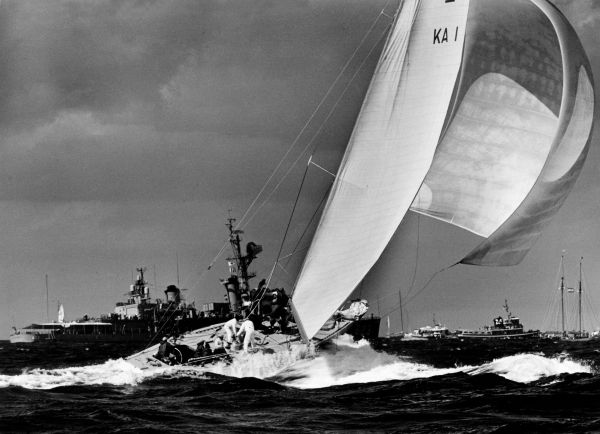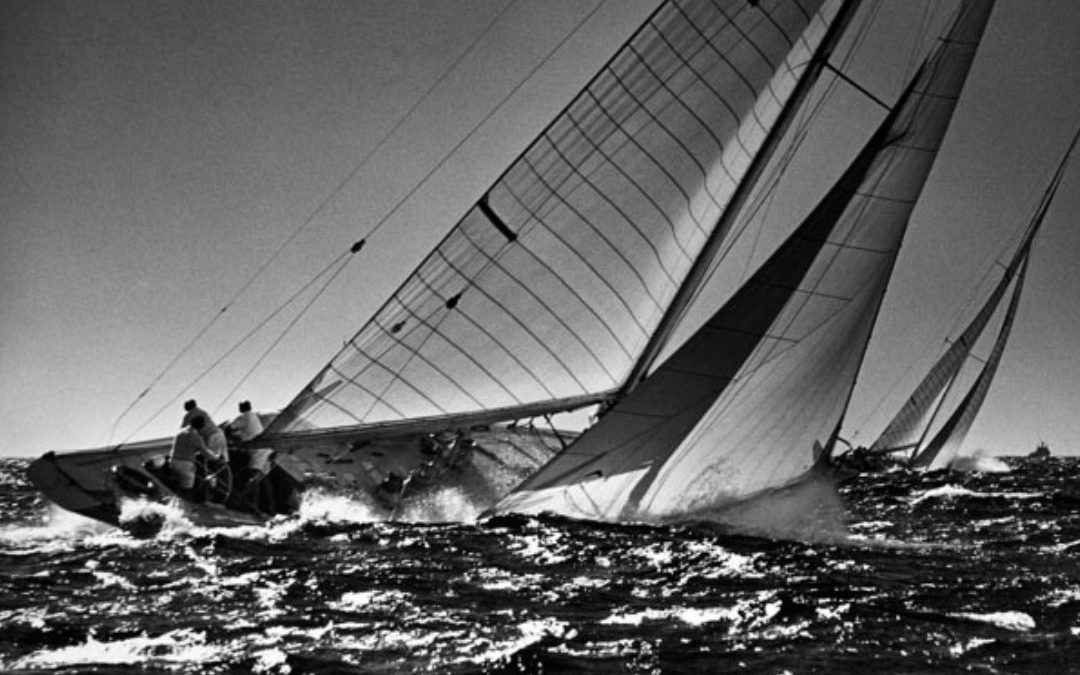We want to return the ship to its original condition of 1962. This is a unique piece of yachting history that must be preserved!
A classic of America's Cup history is ready for restoration at our shipyard. The 12mR yacht "Gretel" sailed as a challenger for the America's Cup in 1962 and was the first Australian 12-metre ever, designed by Alan Payne. The boat was far quicker than the defending "Weatherly" designed by Philip Rhodes, and indeed won, the first challenger after the race between "Endeavour" and "Rainbow" at an AC competition in 1934. It was exciting, however the Americans proved victorious once again as the Australians were defeated by the formidable crew of the "Weatherly", skippered by Emil "Bus" Mosbacher. Mosbacher had earned a reputation as one of the best skippers of his time; in 1967 he successfully defended the Cup once again, this time with 12-metre "Intrepid" against "Dame Pattie" from Australia.
You are currently viewing a placeholder content from Default. To access the actual content, click the button below. Please note that doing so will share data with third-party providers.
More InformationAbout Gretel
Length: 21.16 m; width 3.58 m; depth 2.67 m; weight 26.7 tonnes; sail area 166.9 m2; designed by Alan Payne, built from wood on steel frames.The America's Cup challenge of 1962 was thoroughly prepared and almost made it to victory. Sir Frank Packer, an Australian media proprietor, announced his plans for the America's Cup back in 1958. For four years he chartered "Vim", designed by Olin Stephens, and back then the fastest 12-metre yacht around, and let his sailors train with her in Australia. "Vim" had already been a sparring partner for Cup defender "Columbia" in 1958. Packer had yacht designer Alan Payne create a new 12-metre boat at the Stevens Institute in New York, where Payne also performed tests in towing tanks.
The 12-metre boat developed by Alan Payne was full of new ideas. A groundbreaking innovation was the ability to connect the genoa winches to four gears using a transmission and operate it using foot pedals. This significantly increased efficiency while turning.
You are currently viewing a placeholder content from Default. To access the actual content, click the button below. Please note that doing so will share data with third-party providers.
More InformationThe first Australian 12-metre yacht was launched on 19 February 1962, seven months before the America's Cup race. Nine days later, the yacht was christened "Gretel" in memory of Frank Packer's late wife. Even during its first test runs against "Vim", it appeared that "Gretel" was very quick. At the end of May 1962, both boats were sent to the USA where "Gretel" later fought off defender "Weatherly" to a difficult and worthy victory. The races were exciting and tight, and the Australians were able to hold their own.
It was exciting, however the Americans proved victorious once again as the Australians were defeated by the formidable crew of the "Weatherly", skippered by Emil "Bus" Mosbacher. Mosbacher had earned a reputation as one of the best skippers of his time; in 1967 he successfully defended the Cup once again, this time with 12-metre "Intrepid" against "Dame Pattie" from Australia.
Although the Australians clearly had the better boat, the Americans amended the rules after this Cup insofar as future competitors would no longer be allowed to have access to American design or construction technology.
After the Cup race in 1962, speedy "Gretel" would go on to serve as a sparring partner for other teams; in 1967 for challenger "Dame Pattie" and later for "Gretel II", Packer's second challenge from 1970. "Gretel" finally sailed in the first "Southern Cross" team in 1975.

From 1973 to 1974, she belonged to "Yanchep Estates Pty. Ltd." with home ports in Perth and Yanchep, in 1975 "Southern Cross America’s Cup Challenge Association, Ltd." owned the yacht, from 1976 to 1979 she once again belonged to the "Gretel Syndicate" and in 1980 she was removed from the Lloyd’s Register. From 1982 to 1994, she worked as a charter yacht in the Whitsundays and was later sold to Europe and sailed for many years in Italy. Here, she was found by Robbe & Berking Classics.




